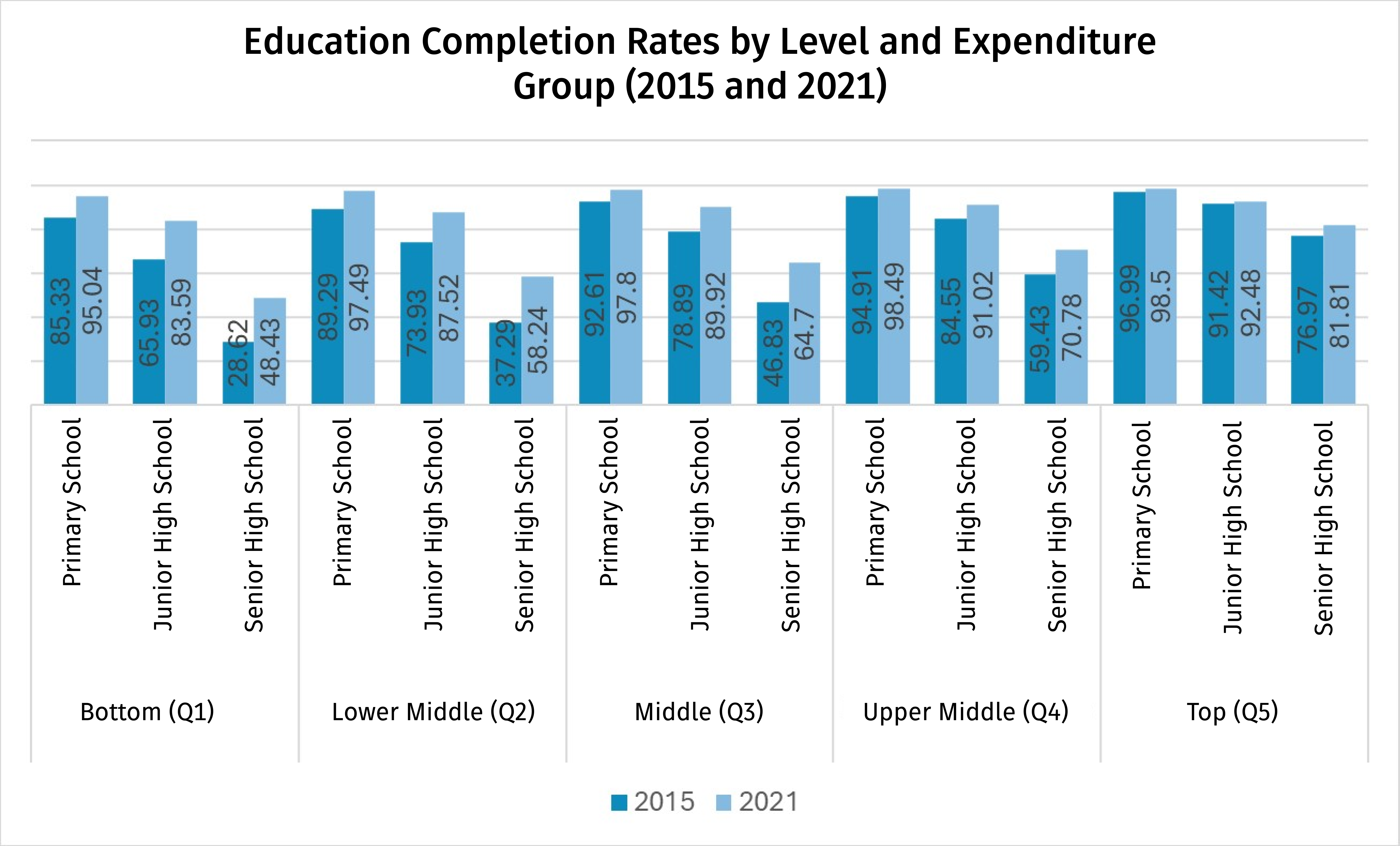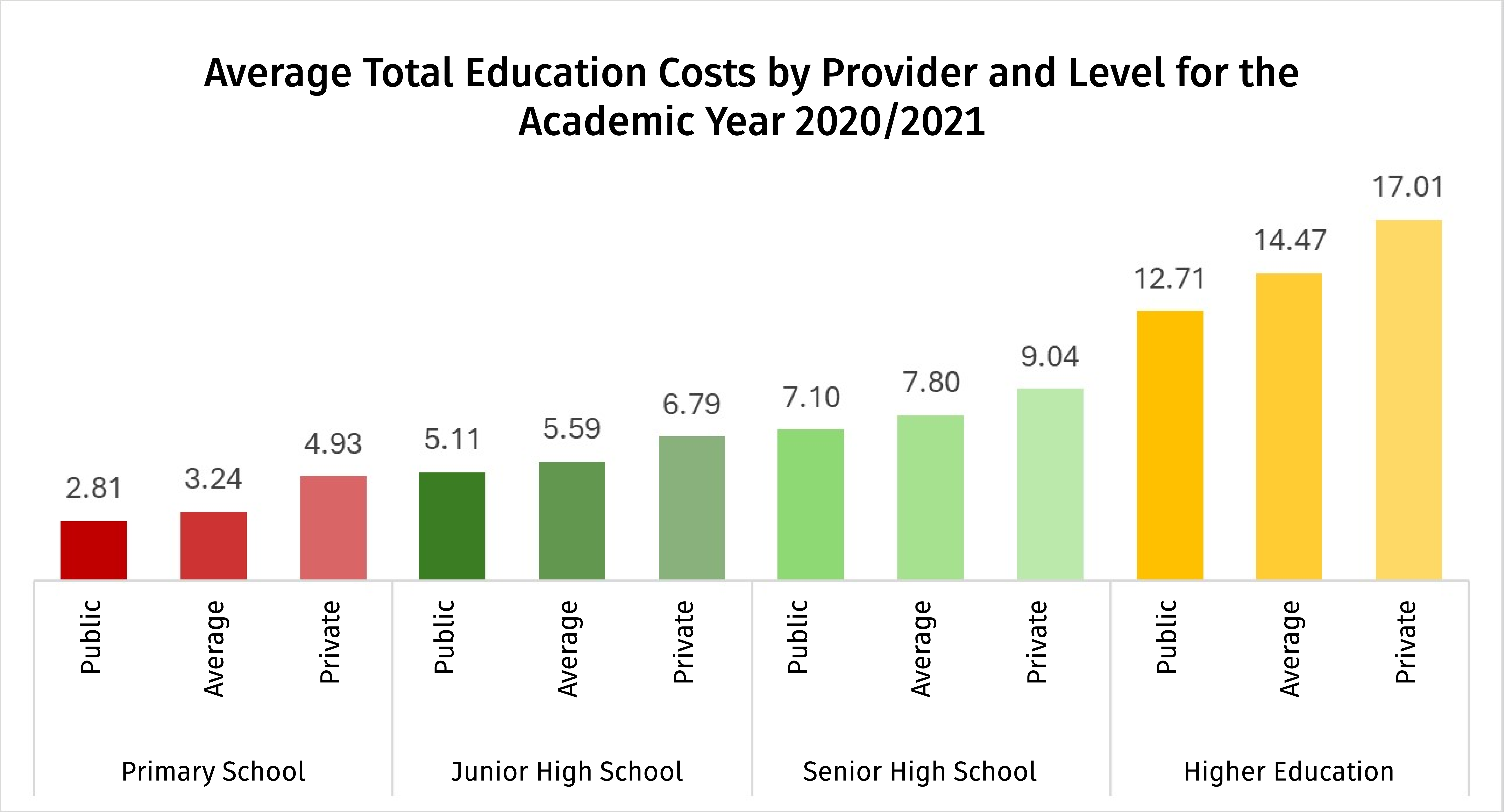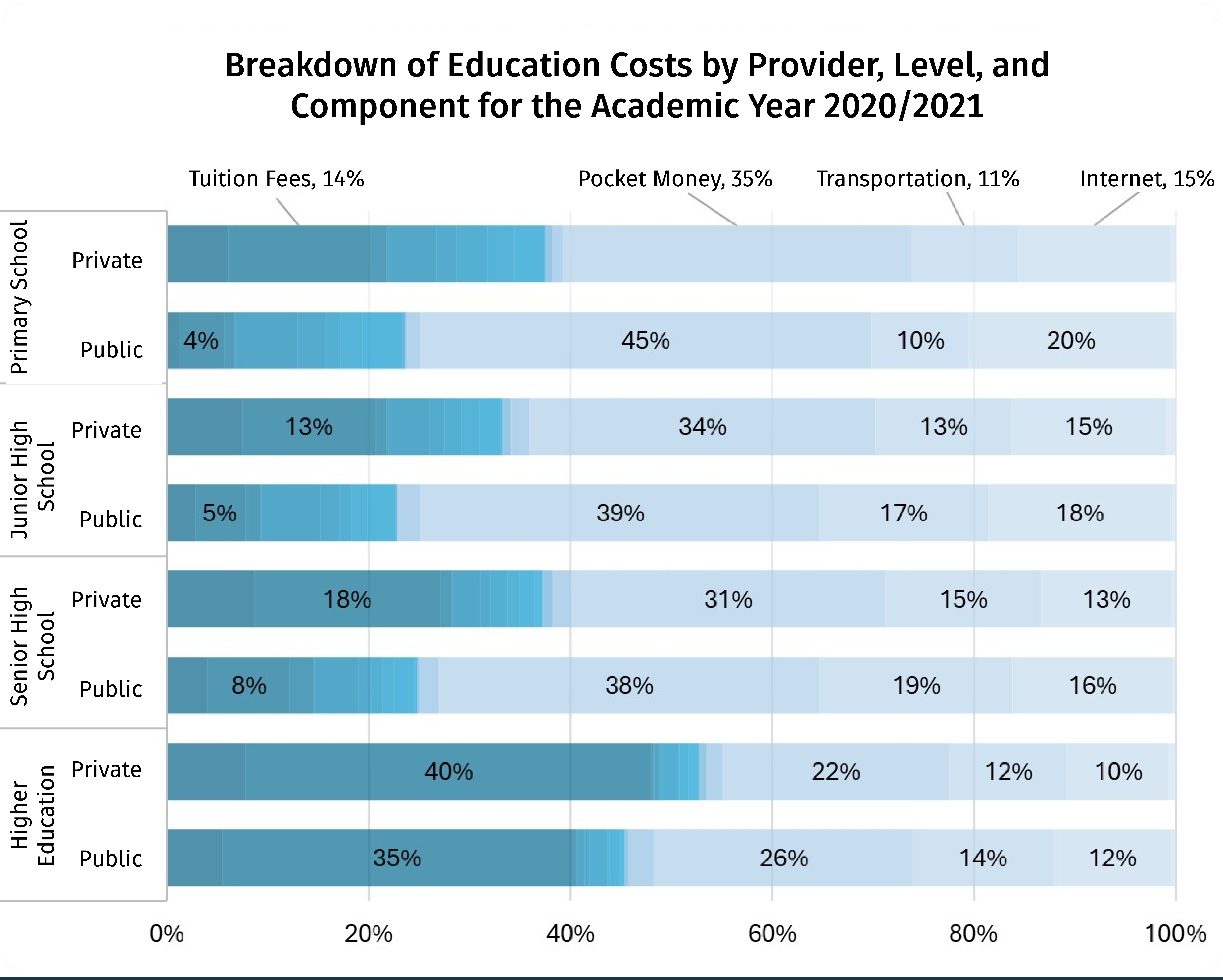Authors: Wisnu Setiadi Nugroho, PhD. & Jamilatuzzahro, M,Si
Global efforts to build equitable communities and ensure true education for all remain complex, primarily due to economic factors. One of the most significant barriers is the rising cost of education, with escalating tuition fees and student debt becoming substantial burdens for many students and their families.
In Indonesia, educational completion rates improved significantly across all socioeconomic groups and education levels from 2015 to 2021. According to Susenas, primary education completion for the lowest socioeconomic group rose from 85.33% to 95.04%, junior secondary from 65.93% to 83.59%, and senior secondary from 28.62% to 48.43%. The highest socioeconomic group also saw notable increases, with primary education completion rising from 96.99% to 98.50%, junior secondary from 91.42% to 92.48%, and senior secondary from 76.97% to 81.81%. These improvements are expected to drive demand for universities to provide higher-quality education that is also affordable, as more students reach higher education levels.

Source: BPS, Susenas KOR 2015 & 2021
Despite these positive trends, issues concerning higher education costs persist. A significant disparity exists between private and public educational institutions, with private schools and universities charging nearly 30% more. Meanwhile, public universities face increased spending due to internationalization and the need to produce high-quality research and teaching. According to Susenas 2021, the average annual total education costs in Indonesia are approximately 12.71 million IDR for public universities and 17.01 million IDR for private universities, averaging around 14.47 million IDR annually. These costs are almost five times the national average of the provincial minimum wage (Rp3.113.359,85).

Source: Susenas MBSP, 2021

Source: Susenas MBSP, 2021
Despite these income disparities, education spending differences between the bottom 40% and middle 40% socioeconomic groups are minimal, with only a 1.42 million IDR discrepancy, approximately 10%. Showing that lack of support for education cost for the underprivileged households. With disparities are more pronounced in elementary education, with a notable 30% difference between these groups. This highlights a broader societal challenge in ensuring equitable educational opportunities across different schooling stages. According to Susenas data, tuition fees constitute a significant portion of educational costs, accounting for 35% in public universities and 40% in private universities. Stipend expenses, covering essentials such as housing and food, represent 26% of costs in public universities and 22% in private universities. These figures underscore the critical role of tuition fees in determining the affordability of education, emphasizing that ensuring accessibility largely hinges on managing these costs effectively to facilitate broader access to quality education across different socioeconomic groups.

Source: Susenas MBSP, 2021
Several factors significantly influence tuition fees at universities, affecting the affordability and accessibility of higher education. Firstly, university costs include faculty salaries, facility maintenance, research resources, and technological advancements. These expenditures directly impact tuition fees as universities strive to uphold high educational standards and provide a modern infrastructure conducive to learning. Government funding also plays a crucial role, particularly in public universities, where subsidies and grants help offset operational costs. Reductions in public funding often lead to higher tuition fees as institutions seek alternative revenue sources to maintain academic quality and student services. Conversely, robust government support can stabilize or even reduce tuition costs, enhancing affordability for students.
Private donations and endowments are another critical factor. Contributions from philanthropic individuals, alumni, and corporations support scholarships, research initiatives, and infrastructure improvements. These donations can alleviate financial pressures on universities, lowering tuition fees and expanding opportunities for students from diverse backgrounds. Additionally, geographic location influences tuition fee differentials. Universities in urban areas with higher living costs often charge more to cover expenses associated with housing, utilities, and local taxes. In contrast, institutions in rural or less expensive areas may offer comparatively lower tuition fees, reflecting regional economic disparities and variations in the cost of living.
Ensuring affordable university education requires concerted efforts from multiple stakeholders. Government policy is pivotal, with initiatives such as KIP Kuliah and LPDP scholarships aimed at subsidizing tuition costs and providing stipends for economically disadvantaged students. Expanding the reach and funding of these programs can significantly alleviate financial burdens, fostering greater inclusivity in higher education. Addressing systemic barriers that hinder affordability and accessibility is equally essential. This includes advocating for policy reforms subsidizing tuition and addressing broader economic inequalities affecting students’ ability to pursue and complete their studies. The government could reallocate some funding from Sekolah Kedinasan (civil service academies) to public universities, making entrance tests more affordable. Universities can also enhance financial transparency. By openly disclosing the allocation and utilization of funds, institutions can build trust and demonstrate their commitment to responsible financial management. Establishing alumni funded scholarships and promoting partnerships with industry and philanthropic organizations can diversify financial aid opportunities and support students from varied economic backgrounds.
On the student front, bolstering financial support mechanisms is crucial by improving access to information about scholarships, grants, and student loans enables informed decisions about financing education. Expanding work-study programs provides valuable employment opportunities that complement academic pursuits while easing financial pressures. Enhancing career services and alumni networks can support students during their educational journey and as they transition into the workforce, increasing their earning potential and repayment capabilities for student loans. Fostering a culture of financial literacy among students, providing workshops and resources on budgeting, managing debt, and making informed financial decisions can empower them to navigate the financial challenges associated with higher education more effectively.
By implementing these comprehensive strategies supported by proactive government policies, transparent university practices, and robust student support mechanisms society can advance toward a future where higher education is accessible and equitable for all aspiring learners. This can create a more supportive and inclusive environment that empowers students to thrive academically and professionally without undue financial hardship.
